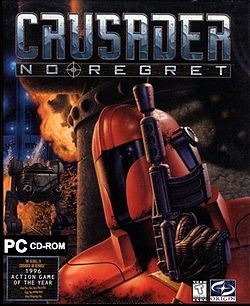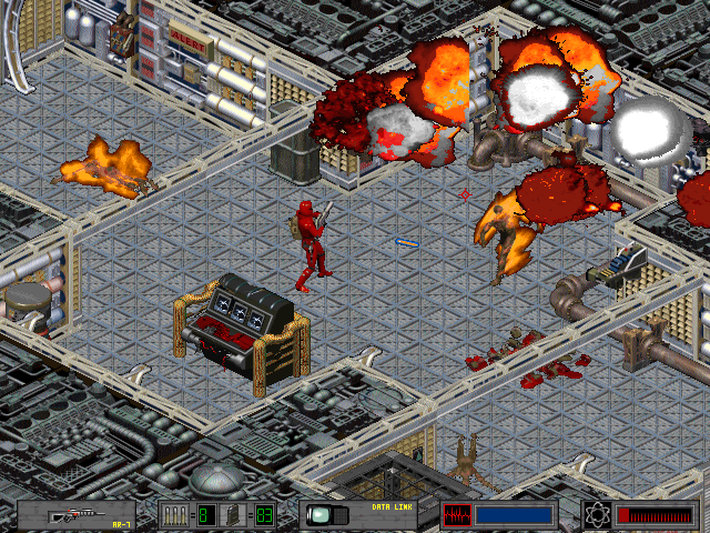Let Your Grog Flag Fly!
Recent Articles
GARPA 17, 4/26/13
SimCity AAR Part 1, 4/25/13
Announcing MayViation, 4/24/13
Second Look at Wargame AirLand Battle, 4/21/13
First Look at Wargame AirLand Battle 4/19/13
AAR of Dark Age Minis Battle, 4/18/13
Video Review of Zulus on the Ramparts, 4/14/13
GARPA 16, 4/12/13
Crusader Kings II AAR Part 16, 4/11/13
Book Review: Ninja: 1000 Years of the Shadow Warrior, 4/10/13
Review of Bioshock INfinite, 4/7/13
Review of XFX PRO650W Core Edition PSU, 4/5/13
Civilization V AAR, Part 13, 4/4/13
Fire with Fire, 3/31/13
GARPA 15, 3/29/13
Civilization V AAR, Part 12, 3/28/13
Wheaton INterview, 3/27/13
March Mayhem Winner, 3/25/13
Warlock Multiplayer AAR, 3/21/13
WWII PTO Alternate Histories, 3/20/13
GARPA 14, 3/15/13
Crusader Kings II AAR, part 15, 3/14/13
Civilization V AAR, part 11, 3/7/13
Prezcon Convention Coverage, 3/2/13
Civilization V AAR, part 10, 3/3/13
Click here for our
FULL Article Index
and
Screenshot features |
Retro Tactical! A look back at Crusader: No Regret
by Andy Mills, 20 July 2012
Back in 1996, I spent weeks playing one of the last great PC games of the DOS era - Crusader: No Regret. This game remains a true classic in the world of isometric tactical combat and even now, more than a decade later, many players are still discovering the fun of this venerable title.
History of the Crusaders
The two games in the Crusader series (No Remorse and No Regret) pit a renegade soldier against a corrupt and brutal empire...err... I mean government, known as the World Economic Consortium (WEC). The soldiers in the game are known as “silencers” because they systematically eliminate rebels and those who dare speak out against the corrupt WEC regime. The “silencer” at the centre of the Crusader series turns against the regime when he refuses an order to kill innocent civilians. This sudden change of heart greatly disappoints the leaders of the WEC and he is slated for termination. Unfortunately, for the evil leaders of the WEC, our hero decides to work with the resistance to exact his own form of run-and-gun justice against his former employer.
While No Remorse established the backdrop for the action, No Regret allowed the game designers to develop various aspects of the Crusader universe in greater detail. While some of the designers denied that the Crusader universe shared a common lineage with other Origin Systems titles, such as Wing Commander and System Shock, there does appear to be some loose connections. For instance, the game uses the same calendar system as in Wing Commander and a newspaper article in the game mentions SHODAN and the disaster that took place at Citadel Station which was the setting for System Shock 1. These tie-ins and even some cleverly recycled dialogue from Star Wars worked to hold the interest of the player and make the experience more enjoyable.
Going Tactical
Like No Remorse, No Regret was a third person shooter that required the player to use a mix of strategy, cunning and good ‘ole brute force to achieve his goals. Sticking with the same basic engine as the original Crusader, this game followed the “if it ain’t broke, don’t fix it” philosophy and worked to provide the player with a familiar interface to explore 10 sprawling, multi-level environments. This second installment in the series featured enhanced combat maneuvers, such as the forward roll, which added to an already impressive repertoire of tactical possibilities. No Regret also added to the number of weapons in the already jam-packed Crusader arsenal, which included sub-machine guns, rocket launchers, micro-wave broilers, Bouncing Betties, det packs and autonomous robot spider mines. Setting enemies on fire, freezing them, or turning hapless troopers into puddles of goo just never seemed to get old. Added touches, such as allowing the player to access scout droids or gun turrets, kept the action fresh and allowed for many missions to be accomplished in a variety of different ways.
Hey! You Got Your FMV In My Video Game!
Like other games at the time, No Regret followed a standard intro, gameplay and full-motion video (FMV) cut-scene formula, but it was done very well. Cutscenes just didn’t take place between missions, several also occurred during the in-game action. These short sequences often punctuated missions to provide the player with intelligence updates, hints or access codes. The acting was well done, but no big name FMV actors of the era, like Malcolm MacDowell or Mark Hamill made an appearance. Despite this lack of star power, the use of the FMV clips added value to the game play and served to immerse the player in the world of the “Silencer.”
Let’s Get It On!
In the process of playing through all ten settings, which range from space freighters to massive industrial complexes, the ingenuity of the games keyboard command scheme became readily apparent. A variety of key combinations allowed for the effective navigation of each environment without making things overly complex. This well thought-out balance let the player experience in-depth game-play without becoming distracted by an overwhelming number of movement options or key combos. In addition to using keyboard commands, joystick (as bizarre as that may seem) and gamepad options were also available. All of these commands were highlighted on a large reference card that could be placed beside the player for easy reference. Other documentation that shipped with No Regret, outlined the specific parameters of various weapon or munitions, while a mock hardcopy newspaper of the future served to maintain the suspension of disbelief and offer subtle gaming hints.

Problem solving “Silencer” style.
Crusader Shock
After completing the game and reflecting on the whole experience, I couldn’t help but to compare No Regret to System Shock. Whether intentional or not, the quality and “feel” of the experience in both games was similar. The in-game graphics were well done (for that time period) and sound effects both demonstrated high production values. Both games also required the player to focus on strategy and the careful use of inventory items which played a critical role in the success or failure of the player. By taking advantage of various surroundings and creating traps, with items such as spider mines and Bouncing Betties, the player could offset some of the numerical advantages enjoyed by the enemy.
Off Target
Despite the enjoyable and consuming nature of the game, it certainly could have used some work in the areas of AI and mission design. Enemy troopers often failed to notice major explosions in the near vicinity or walked over scores of their dead comrades waiting to be picked-off like ducks in a shooting gallery. Like most games from this time period, the majority of the action took place inside corridors and passageways. This led to some heavy redundancy in backdrops and tile sets used in the game. Outdoor missions would have added value to the game, but the relative lack of computing power at the time it was released probably relegated the game to being set indoors.
End of the Crusades
Overall, Crusader holds-up well and is a solid and time tested offering for fans of the third person tactical shooter genre. As Martha Stewart would say “that’s a good thing,” as there has never been a spiritual successor to the franchise. Both games in the Crusader series are available at GOG.com and are highly recommended. Go retro and see what the future of tactical combat looked like in 1996!
Discuss it in our forums!
|
Please support the folks that support GrogHeads
|


